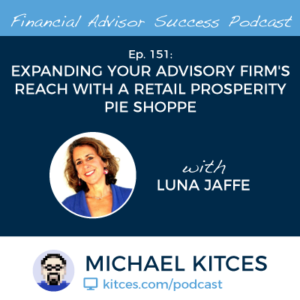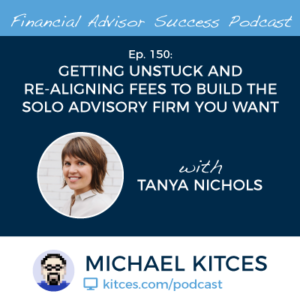Enjoy the current installment of "weekend reading for financial planners" – this week's edition kicks off with the mega-news that Charles Schwab is apparently in talks to acquire TD Ameritrade, in what would create an absolute juggernaut in the brokerage industry with nearly $5 trillion in assets and as much as a 70% market share of RIA custody... which in turn is already raising concerns about whether, at least when it comes to RIAs, creating "Schwabitrade" might actually go too far in reducing competition and industry innovation (not to mention the challenges of integration and managing advisor service at such scale).
Also in the news this week is an indication of the growing "turf war" emerging as everyone from private banks (e.g., Goldman Sachs) to robo-advisors converge on serving the mass affluent that historically were the bread-and-butter client of the independent RIA but are now increasingly hard to attract in a more competitive landscape, and an indication that the SEC may be preparing new Proposed Regulations on both the definition of an Accredited Investor and the RIA Custody Rule (both of which are badly in need of updating for the modern era).
From there, we have several articles on behavioral finance, from a look at the value of a financial advisor as one who helps to minimize potential regret of the few big irreversible financial decisions in life (where it's crucial to have the right advice to ensure the right decision is made in the moment), the emerging rise of "financial therapy" as a complementary value-add for financial advisors (or possibly even the future of the financial advisor's value proposition), and a look at how thus far Artificial Intelligence is still struggling with the sheer breadth and complexity of interpreting human emotions (and suggesting that AI may still be a very long ways off from really being able to replace human-to-human interactions on emotional topics and issues).
We also have several marketing-related articles this week, from exploring why RIAs often have difficulty getting clients to read their email newsletters (and what are realistic stats to expect for client open and click-through rates), the importance of storytelling to both convey a financial advisor's value proposition to prospects and their recommendations to clients through a financial plan (which arguably should be more of a 'storytelling aid' than an analytical document), and the key pages that prospects actually focus on (and therefore every financial advisor should have) on their financial advisor website.
We wrap up with three interesting articles, all around the theme of making good career decisions: the first looks at how most people seek out the wrong kind of career advice (asking people in similar roles or other 'successful' people who tend to give advice from their perspective, instead of asking people who know you well personally or are in the company/role in question already who can really validate whether you understand the role and how good of a fit it really is, or not); the second explores how to find the right community of peers to help get that professional sounding board and support; and the last looks at how, because the best firms end out being exponentially (1,000X) more successful, the key to career success is less about finding the right dream job and simply about finding the right company ("rocket ship") to get on board with... and figure out later how to get into the best role/seat on the rocket ship!
Enjoy the 'light' reading!

 Welcome back to the 151st episode of Financial Advisor Success Podcast!
Welcome back to the 151st episode of Financial Advisor Success Podcast! Welcome back to the 150th episode of Financial Advisor Success Podcast!
Welcome back to the 150th episode of Financial Advisor Success Podcast!
